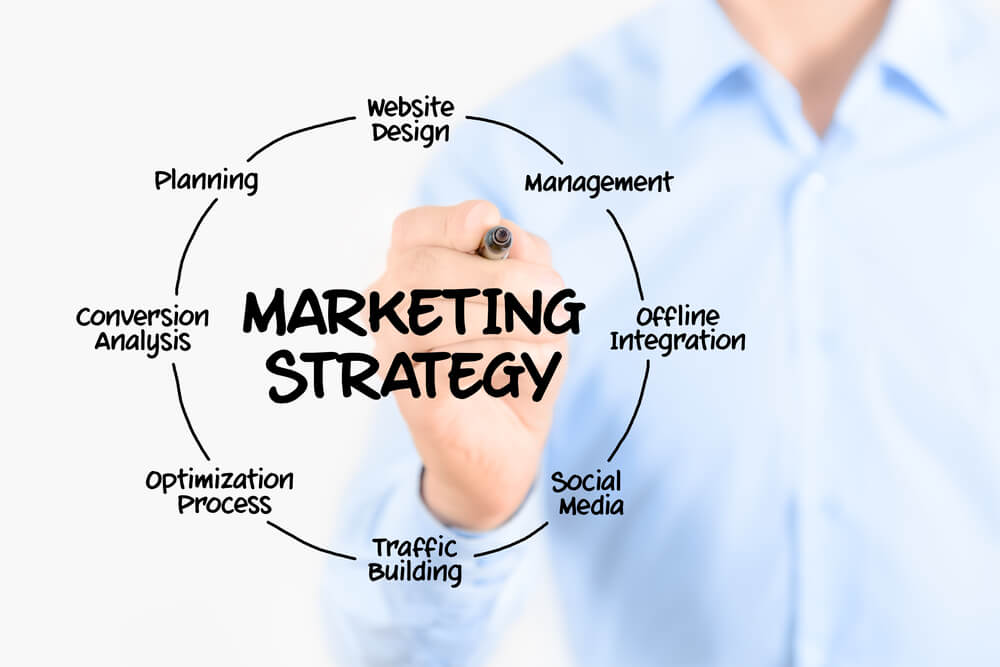How to Plan Your Annual Marketing Strategy
No one wins a marathon by running a series of sprints. The best runners begin training months in advance. On race day, they have a clear goal for the time they want to run and know the pace they need to maintain over 26.2 miles to achieve it.
Successful marketing professionals take the same approach to building brand awareness. They understand it takes foresight and long-term strategizing to maintain a consistent and continuous presence in the minds of their target audience. Rather than go from one short campaign to the next, they plan their marketing strategy annually to ensure sustainable growth.
Here's a step-by-step guide to planning your annual marketing strategy:
Step 1: Review the Previous Year's Marketing Performance
Before figuring out where you're going, you must know where you've been. Review your marketing performance to determine your prior year's return on marketing investment (ROMI), which will serve as your baseline for next year's strategy.
Identify which efforts worked and which didn't, and then rank them in terms of key ROMI metrics such as customer acquisition costs, conversion rates, costs per lead, and digital engagement measures like click-throughs, content downloads, and email opens.
Substitute research for retrospective analysis if your business lacks a marketing track record. Review industry or peer-group marketing data, if available, and develop a target ROMI for your next twelve months. Don't worry about pinpoint accuracy — you only need a reasonable ballpark estimate to refine as you flesh out your strategy in the following steps.
Step 2: Define Your Target Audience
What markets do you want to penetrate? Who are your ideal customers in those markets, and what makes them tick? Answer these fundamental questions in detail.
The more refined your customer personas and target market profiles, the clearer your understanding of how to reach them and deliver messages that resonate with them. Taking extra time on this step and to be as granular as possible about your target audience can pay significant dividends for your company’s marketing investment going forward.
Step 3: Set Goals and Objectives
Now set goals and objectives for the upcoming year's ROMI and its constituent metrics. Make sure these goals are S.M.A.R.T:
- Specific in their definition
- Measurable with data you can capture
- Achievable with your available resources
- Relevant to your brand and industry
- Time-bound in that you can achieve them within a year
It's essential to test your goals and objectives against these S.M.A.R.T. factors if you don't have historical marketing performance data to use as a reference point and reality check.
Step 4: Identify Your Budget
Next, determine how much money you can commit to achieving your annual marketing goals and objectives. Calculate the minimum you must spend and the amount you can afford to hold in reserve to use as needed. Break your budget down into spending on specific channels (see below) and identify any contingencies, such as a sudden surge in demand or a campaign element going viral, that may warrant additional spending.
Remember, goal setting and budgetary planning go together. Spending is a fundamental component of ROMI. As you plan your budget, you may need to revisit your goals and objectives and adjust to ensure they remain achievable and vice versa.
Step 5: Choose Your Marketing Channels
Now that you know your target audience and have a fix on your goals and budget, select the most effective marketing channels for reaching your target audience. This is a critical moment in planning your annual marketing strategy. Your choices will set the tone and direction for the journey your customers take while interacting with your brand.
Be sure to evaluate your preferred marketing channels against the target audience analysis, budgeting, and goal setting you conducted. How likely is your audience to engage with the medium (digital, radio, print, etc.) you've selected? Does the medium fit the story you're telling and the experience you want your customer to have? Is it realistic to expect a marketing channel to deliver the growth or conversion rates you targeted? Revisit any figures that don't line up and revise them until everything fits together.
Step 6: Monitor and Measure Your Results
Your annual marketing strategy provides a template to follow. But it's not fixed in stone. Just as a distance runner checks her watch and makes adjustments to stay on pace during a marathon, so should you monitor and measure your results to determine what's working and what isn't.
Be prepared to reallocate your budget toward the most effective channels, but also remember to be patient if you don't see immediate results. The success of an annual strategy often depends on delivering a frequent, consistent message to your target audience over a period longer than a one-and-done marketing campaign.
Step 7: Partner with a Full-Funnel Media Partner
Planning an annual marketing strategy by following the steps above can benefit your business by bringing coherence and consistency to your marketing efforts. But you don't have to shoulder the burden of the planning process alone. Even successful business leaders need help crafting a compelling customer value journey and executing the necessary steps to make it a reality.
Mid-West Family Springfield IL is a content marketing company with years of experience developing winning marketing strategies for a wide range of businesses. We can help you plan an annual marketing strategy that drives sustainable growth and consistent brand awareness. Connect with a Mid-West Family strategist today to learn how we can help you strategize and achieve your marketing goals.



